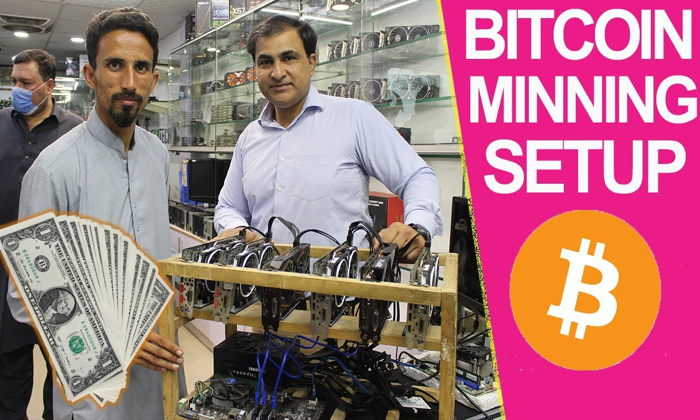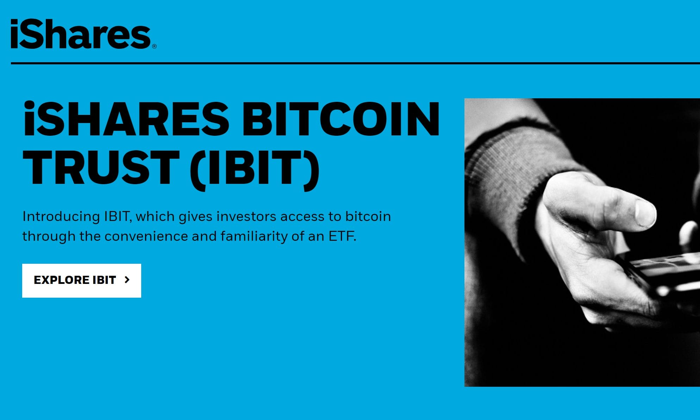The World Liberty Financial Ethereum sale marks a pivotal moment amidst a turbulent market landscape, as the firm navigates through significant financial challenges. Recently, World Liberty Financial (WLFI), partially owned by Donald Trump’s family, offloaded 5,471 ETH for about $8.01 million, reflecting ongoing struggles within the Ethereum market. This move highlights a staggering unrealized loss of approximately $125 million, stemming from a previous investment in 67,498 ETH at much higher prices. The circumstances surrounding the sale resonate deeply with current events, including the recent USD1 stablecoin announcement aimed at bolstering investor confidence. As market analysts scrutinize Ethereum’s volatility and its impact on DeFi projects, WLFI’s situation underscores the wider implications of ongoing geopolitical tensions and their effect on cryptocurrency valuations, especially in light of news related to Donald Trump and Ethereum losses.
In the ever-evolving landscape of cryptocurrency, the recent developments surrounding the World Liberty Financial Ethereum sell-off resonate beyond mere fiscal loss. The decision by WLFI, which is intertwined with Donald Trump’s interests, to liquidate its Ethereum assets speaks volumes about the current state of the decentralized finance ecosystem. As analysts delve into the nuances of Ethereum market analysis and the repercussions of DWF Labs’ substantial token investment, the narrative unfolds further with the introduction of the USD1 stablecoin initiative. This strategic response aims to create stability amidst the turbulence of the crypto market, reflecting a broader trend in institutional confidence. As we explore the implications of these actions, it becomes evident that the blend of high-profile investments and market dynamics will shape the future trajectory of cryptocurrency.
World Liberty Financial Ethereum Sale: Analyzing the Impact on Cryptocurrency Markets
The recent decision by World Liberty Financial (WLFI) to sell part of its Ethereum holdings has sent ripples through the cryptocurrency markets. This sale, involving 5,471 ETH for around $8.01 million, underscores the volatility and challenges faced by even well-backed ventures like WLFI, which is partly owned by Donald Trump’s family. After investing $210 million to acquire a significant Ethereum position, a valuation drop that has resulted in a staggering unrealized loss of approximately $125 million raises questions about risk management in the DeFi space.
As WLFI navigates this turbulent financial landscape, it highlights broader issues within the Ethereum ecosystem. With ETH’s price plummeting to below $1,500, reflecting a 56% year-to-date correction, investor sentiment is becoming increasingly cautious. The geopolitical factors, including uncertainties tied to Trump’s tariffs, may be influencing both traditional stock markets and cryptocurrency valuations, further complicating WLFI’s position.
Moreover, the impacts of this sell-off extend beyond WLFI itself, affecting the overall confidence in Ethereum. As investors witness such major liquidations, concerns arise about the future price trends of ETH. Analysts have been closely monitoring these shifts, correlating WLFI’s struggles with the anthill of shifting market conditions caused by political and economic factors. The Ethereum network’s stability might face additional scrutiny, affecting its perceived value among investors who may reconsider their positions in light of waning prices.
DWF Labs Investment in WLFI: A Silver Lining Amidst Losses
In contrast to the bearish sentiment surrounding WLFI’s Ethereum sale, the recent $25 million investment by DWF Labs could signify a resilient path forward for the DeFi project. By acquiring 250 million WLFI tokens, DWF Labs has provided a much-needed boost of confidence in the project’s future potential. This investment highlights a divergence in market perspectives, where long-term players see inherent value despite current fluctuations in ETH prices and WLFI’s operational struggles.
Analysts note that this deal, valued at nearly seven times the initial offering price of $0.015, reflects optimism about WLFI’s roadmap and strategies moving forward. The partnership might also open new avenues for liquidity and market-making, reinforcing WLFI’s standing within the competitive DeFi landscape. Amid the skepticism surrounding ongoing Ethereum price movements, such bullish endorsements from established entities like DWF Labs could invigorate investor interest.
Additionally, this investment comes on the heels of DWF Labs’ acquisition of USD1, the stablecoin launched by WLFI. This strategic move aligns with recent discussions in the crypto space regarding stablecoins’ role in providing security amid volatility. USD1 aims to maintain a stable peg with the US dollar, presenting a potential hedge against the current uncertainties plaguing cryptocurrency markets. This dual investment signals confidence in WLFI’s potential recovery and future growth, an encouraging sign for stakeholders watching the evolution of stability within the DeFi sector.
Understanding the Ethereum Market Analysis Post WLFI Sale
The recent WLFI Ethereum sale necessitates a deeper understanding of the current state of the Ethereum market. With the asset experiencing a sharp decline from prices that hovered around $3,259, the market is reflecting broader concerns about overvaluation. The sell-off is not just a WLFI issue; it raises questions about the sustainability of Ethereum’s previous highs in an increasingly regulatory environment. Analysts are observing correlations between the downturn in Ethereum prices and broader economic factors, including the impact of Donald Trump’s tariffs that have created a volatile backdrop for investor decisions.
Market analysts continue to scrutinize the dynamics influencing ETH’s price resilience. Economic indicators, geopolitics, and the performance of competing assets all play crucial roles in shaping the forecast for Ethereum’s future performance. The decline below $1,500 further emphasizes the need for comprehensive market analysis, as investors seek clarity in navigating a terrain fraught with uncertainty.
Furthermore, Ethereum’s performance will hinge on its ability to recover from this bearish trend. Analysts are hopeful for a resurgence that could be spurred by increased adaptability and institutional interest as the crypto space matures. The sale by WLFI may serve as a catalyst for healthy dialogue on risk management strategies within investments, suggesting that even major players must navigate the treacherous waters of market corrections. A well-rounded analysis not only spotlights the immediate challenges but also opportunities that could emerge as the market recalibrates.
The Future of USD1: Stablecoin Developments Amid Ethereum Challenges
In light of WLFI’s recent challenges, the introduction of USD1 as a stablecoin is a critical development worth noting. Designed to maintain a 1:1 peg with the US dollar, USD1 emerges as a potential solution for investors seeking stability. The stablecoin aims to enhance trust and liquidity within the WLFI ecosystem, representing a shift towards more reliable currency alternatives in the volatile landscape of cryptocurrency. The upcoming airdrop proposal further aims to stimulate interest and engagement among token holders, creating a community-driven approach to its adoption.
Given the recent turbulence experienced within the Ethereum market, USD1’s introduction could help to stabilize the investor sentiment towards WLFI. As WLFI readies its distribution model, early adopters could benefit from rewards while simultaneously testing the stablecoin’s functionality. The response from the market will provide insightful data, shaping the approach towards stablecoin projects amidst Ethereum’s fluctuating fate.
Moreover, the successful deployment of USD1 might offer insights into the evolving landscape of stablecoins, especially as regulatory frameworks develop. With increasing scrutiny on how cryptocurrencies are classified and managed, WLFI’s foray into stablecoins could set a precedent for other DeFi projects. This proactive strategy could indicate a roadmap for leveraging stable assets to counteract price volatility linked to Ethereum and further investing in its sustainable growth within the crypto market.
The Implications of WLFI’s Ethereum Trading Strategy
The trading strategy employed by World Liberty Financial, particularly its recent Ethereum sell-off, illustrates the complex dynamics of managing a portfolio within a fluctuating market. Selling off Ethereum holdings at a loss raises questions about timing and strategy, especially for a company like WLFI that has significant financial stakes involved. Such moves often prompt discussions within investment and cryptocurrency circles about whether this was a necessary step to manage liquidity or reflect deeper concerns about the asset’s valuation. The implications extend beyond WLFI—the market reads these actions as signs of broader investor sentiment, which can trigger additional sell-offs or panic within the crypto community.
Additionally, these trading strategies must be critically assessed against the backdrop of community trust and stability in the project. When major players make sudden moves, it can lead to ripple effects throughout the market, influencing other investors’ confidence levels in Ethereum and similar assets. Investing in cryptocurrencies requires a delicate balance of risk and reward, and WLFI’s strategy may encourage other projects to reconsider their own asset holdings in the face of market volatility.
On a broader scale, the implications of WLFI’s strategy could set a precedent for how other DeFi projects approach asset management within a fluctuating market. Companies may now prioritize a more cautious stance, emphasizing risk mitigation strategies to preserve capital during downturns. Furthermore, the ongoing discourse surrounding WLFI will likely stimulate more inquiries into how DeFi projects strategize asset allocations, hoping to avert similar losses and pivot towards more resilient investment frameworks.
Donald Trump’s Influence on Cryptocurrency Market Dynamics
Donald Trump’s involvement with World Liberty Financial directly connects his political persona to the fluctuating world of cryptocurrencies, particularly as it relates to Ethereum. His influence could significantly shape market perceptions, potentially contributing to price volatility based on his public statements and policy decisions. The impact of Trump’s tariffs not just on traditional markets but specifically on cryptocurrencies illustrates how political decisions can intertwine with economic outcomes, directly affecting investor confidence in assets like Ethereum.
As the crypto market continues to mature, the implications of political factors, particularly those associated with high-profile figures such as Trump, will become increasingly relevant. Investors are likely to remain vigilant, monitoring how his decisions could influence market sentiment and dynamics, possibly leading to a more cautious approach towards crypto investments. This intersection of politics and finance emphasizes the necessity for investors to stay informed not just about technical market indicators but also on the political landscape affecting the crypto environment.
Moreover, with Trump’s family associated with WLFI, the political implications extend further, potentially affecting the reputation and trustworthiness of such financial entities. If WLFI’s performance continues to correlate with Trump’s political developments, it might present opportunities or challenges that should be strategically navigated. Future actions by Trump’s administration and their repercussions on market sentiments concerning both Ethereum and stablecoins like USD1 suggest that stakeholder strategies will increasingly need to account for political risk alongside traditional market analytics.
Linking Ethereum Market Struggles to Geopolitical Uncertainty
The Ethereum market’s recent downturn can be fundamentally linked to geopolitical tensions, particularly those arising from Donald Trump’s tariff policies. These tensions contribute to an unpredictable macroeconomic environment, reshaping investor behavior within cryptocurrency markets. As traditional markets react to such geopolitical risks, cryptocurrency valuations—including Ethereum—are not immune to the effects of global political climate changes. The connection between tariffs and their impact on digital assets like ETH emphasizes the intricate balance investors must maintain in navigating both sectors.
Furthermore, analysts suggest that as geopolitical events unfold, market participants should remain cautious and informed. A rise in uncertainty may lead investors to liquidate positions in riskier assets, including cryptocurrencies, thereby exacerbating price drops. Over the longer term, monitoring geopolitical events could become a critical element of Ethereum market analysis, helping investors anticipate and adjust their strategies accordingly.
The interplay between the Ethereum market and global geopolitics highlights the importance of increasingly sophisticated strategies in asset management. Understanding the implications of political events and their potential impact on cryptocurrency valuations positions investors to respond proactively to crises. As the crypto landscape evolves, embracing a more holistic approach to market analysis will be essential, integrating technical factors with geopolitical considerations in order to foster resilient investment strategies.
Frequently Asked Questions
What are the implications of the Donald Trump Ethereum loss for World Liberty Financial (WLFI)?
The recent Donald Trump Ethereum loss associated with World Liberty Financial highlights the volatility of the cryptocurrency market. WLFI’s significant unrealized loss of $125 million from their Ethereum holdings underscores the risks DeFi projects face amidst market fluctuations. This situation may affect investors’ confidence in WLFI and its future strategies.
How has the Ethereum market analysis impacted World Liberty Financial’s decisions?
Ethereum market analysis has revealed concerning trends, notably the decline of ETH below the $1,500 mark. This has led World Liberty Financial to sell off portions of its Ethereum assets to mitigate losses. Market conditions suggest that WLFI is responding to ongoing volatility to stabilize its finances.
What is DWF Labs’ role in World Liberty Financial Ethereum sale strategy?
DWF Labs is playing a crucial role in World Liberty Financial’s Ethereum sale strategy by investing $25 million in WLFI tokens. This investment demonstrates confidence in WLFI’s potential despite the current Ethereum market downturn, potentially offering a pathway for recovery and growth.
What does the USD1 stablecoin announcement mean for World Liberty Financial and Ethereum investors?
The USD1 stablecoin announcement by World Liberty Financial aims to provide a fully collateralized asset pegged to the US Dollar, which could attract Ethereum investors seeking stability amid fluctuating crypto prices. By introducing USD1, WLFI may enhance its market position and offer new opportunities for token holders.
Why is the WLFI crypto news significant in the context of Ethereum’s performance?
Recent WLFI crypto news is significant as it reflects the challenges and strategies of a major DeFi project helmed by individuals linked to Donald Trump amidst a downturn in the Ethereum market. Understanding WLFI’s actions provides insights into industry trends and investor sentiment, critical factors influencing Ethereum’s future performance.
How do geopolitical events influence World Liberty Financial’s Ethereum investments?
Geopolitical events, including the ongoing Trump tariff dispute, have been cited as influencing Ethereum’s price and, by extension, World Liberty Financial’s investment strategies. The uncertainty created by these factors adds to the volatility of the Ethereum market, impacting WLFI’s financial decisions and asset management.
What is the significance of WLFI’s Ethereum sales amid current market trends?
WLFI’s Ethereum sales are significant as they illustrate the company’s response to market pressures, particularly a 56% year-to-date correction in ETH prices. This proactive approach may stabilize WLFI’s portfolio and preserve capital amid volatile market conditions, reflecting a broader trend in crypto asset management.
| Key Point | Details |
|---|---|
| Ethereum Sale by WLFI | World Liberty Financial sold 5,471 ETH for $8.01 million, amid a significant loss. |
| Investment Losses | WLFI has an unrealized loss of about $125 million from its initial investment of $210 million for 67,498 ETH. |
| Current ETH Price Situation | Ethereum’s price has dipped below $1,500, representing a 56% correction year-to-date. |
| DWF Labs Funding | DWF Labs invested $25 million in 250 million WLFI tokens, boosting investor confidence in the project. |
| USD1 Stablecoin Launch | The newly launched USD1 stablecoin aims to maintain a 1:1 peg to the US Dollar and is part of WLFI’s strategy to reward token holders. |
Summary
World Liberty Financial Ethereum sale has raised significant attention following the reported sale of Ethereum holdings amid substantial losses. The challenges faced by WLFI underscore the volatility in the cryptocurrency market, particularly with Ethereum’s current struggles influenced by both market performance and geopolitical factors. The recent confidence shown by DWF Labs in WLFI’s tokens and the introduction of the USD1 stablecoin indicate a strategic response to restore investor faith and enhance stability in these turbulent times.
In an unexpected turn of events, the World Liberty Financial Ethereum sale has captured the attention of crypto investors and analysts alike, following a report of a staggering loss linked to Donald Trump’s family interests. This DeFi project, partly owned by the former President’s family, is liquidating portions of its Ethereum assets due to current market volatility. Recent data indicates that WLFI sold 5,471 ETH for roughly $8.01 million, a significant drop from its earlier acquisition costs of $210 million for 67,498 ETH. As Ethereum struggles to maintain its value, dipping below the $1,500 threshold after a 56% correction this year, investors are understandably concerned about the implications of these sales. With the backdrop of the USD1 stablecoin announcement and investment from DWF Labs, the Ethereum market analysis reveals both challenges and opportunities ahead for World Liberty Financial amid turbulent times.
The recent liquidation of Ethereum holdings by World Liberty Financial has raised eyebrows in the cryptocurrency landscape, especially given its ties to former President Donald Trump. This development not only highlights the challenges facing the DeFi project but also reflects wider trends affecting the Ethereum ecosystem. Following a notable downturn in prices, WLFI’s decision to part with a portion of its ETH reserves underscores the urgency many companies feel as they navigate today’s volatile markets. The strategic involvement of DWF Labs, alongside the notable $25 million investment in WLFI tokens and the launch of the new USD1 stablecoin, presents a compelling narrative within the crypto sector. As interest grows in the evolving dynamics surrounding WLFI and the broader Ethereum marketplace, it is clear that this story will continue to unfold in the coming weeks.















